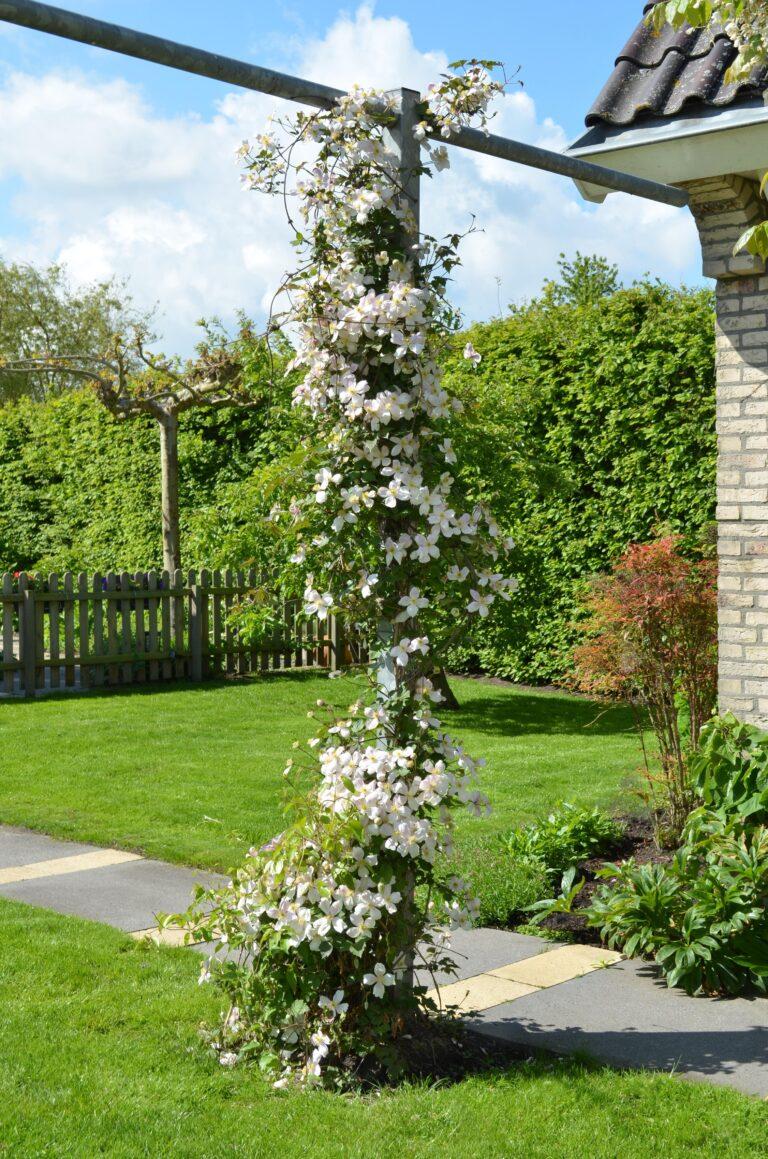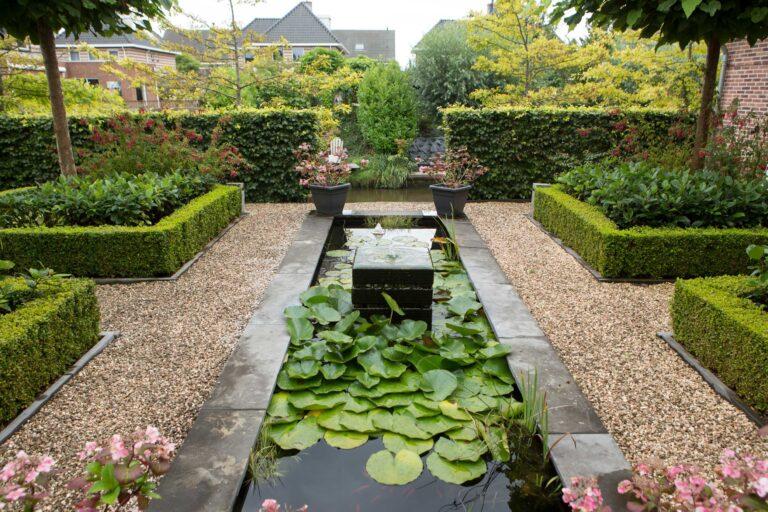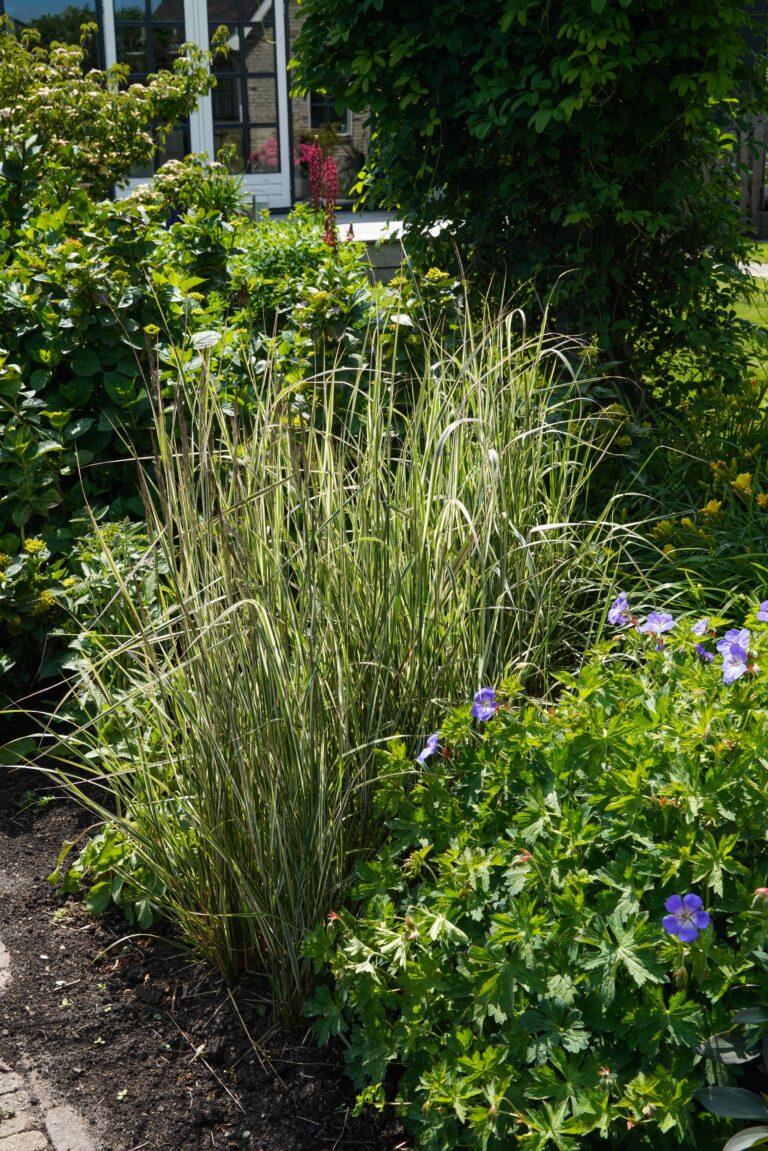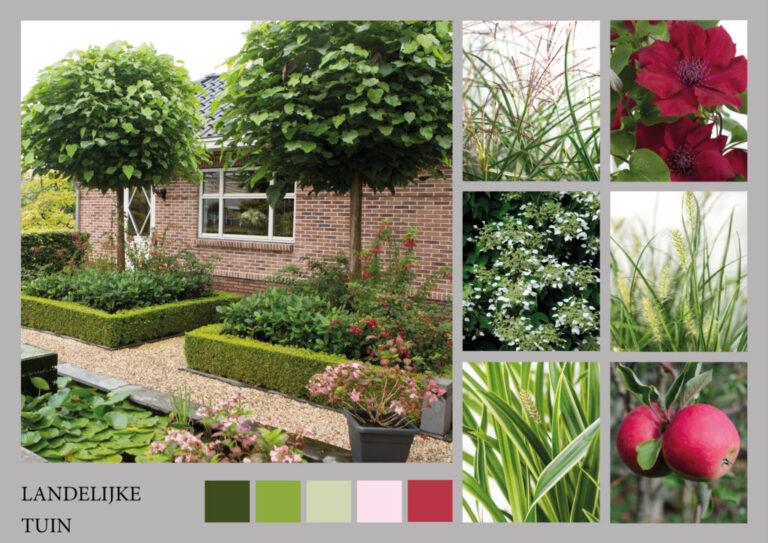Organic shapes, nature growing freely without having to be neat and tidy and a playful layout. This describes the rural garden in one sentence. Rural gardens are characterised by a variety of evergreens, semi-paved paths and water elements. The country style is often associated with large gardens while it has many great tricks and elements for any garden!
Designs
Designing your garden can sometimes be a little confusing. What do you take into account? And how do you ensure that this remains a coherent whole? There is a lot involved in designing your garden. There is one important rule in rural design: your garden should blend into the surrounding landscape. Don’t be alarmed if you have a garden in a terraced house. A rural landscape is not visible, but fortunately the playful rural style has a solution for this. The use of shrubs, hedges and winding paths to different seating areas ensures that the garden still takes on a rural style.
Materials
Rural gardens are characterised by the natural materials in your garden. Lay out your rural garden with used materials. Think of second- or even third-hand pottery as decoration or a cosy wooden sitting area surrounded by climbing plants. Placing natural materials in a used state creates a rustic and playful style that makes the surroundings look native.


The seats
Rural gardens can be easily recognised by their various seating areas. You divide these small seats into small paths leading to them. Do you want to create seating areas in a small garden? Make use of the rest of the garden to divide it up. Create a windy path through your planting and provide a small wooden bench. If there happens to be a border, you can also use that to make your bench. By using a border edge, there is no need for extra space in front of the seat.
Path, pavement or paving
In a rural style, there is little room for real paving. Unlike other garden styles, the shape of the paving can make or break your garden. Use winding paths to different seating areas, water elements or right through your planting to immerse yourself in the nature of your own garden. By making the paths playful and winding, you create a playful and natural look. Use bricks that are made of baked clay. This type of stone wears out over the years, which makes it even more beautiful for a rural garden than other types of stone and paving. In addition to bricks, you can also use wood chips or gravel.
Rural planting
We consider the planting to be the most important thing when creating a rural garden. In this style, the plants are the boss! In contrast to a classic garden, in a rural garden you do not need to cut symmetrical shapes in the hedges or trim the plants. Your garden is at its best when you let nature take its course. Of course, you still have to maintain your garden but, unlike other styles, this is a lot less intensive and frequent.
Keep as much area as possible free for planting and then let your creativity run free with nature. A lawn is indispensable in your rural garden. This creates orderliness and blends your garden into the surrounding landscapes.
Use native plants to reflect the rural and playful atmosphere in your planting. Richly flowering shrubs, climbing plants and perennials are often used when choosing the plants in this style. Nature must be allowed to do its work, but by choosing plants with as many flowers as possible, you ensure that our photographers might want to borrow your garden for a photo session! Above all, these flowering plants complete your garden in the rural style. When creating borders or garden fencing, use natural materials such as wood or natural stone as much as possible. Let nature do its work in the borders and choose plants that look good.
To make it easier for you to choose from our range, we have already listed a number of plants that will fit in perfectly with your rural garden and make your garden a beautiful whole. These plants are easy to maintain, have a combined ‘airy’ look and remain compact.


- Miscanthus sinensis ‘Ferner Osten’ is the beautiful reed species which flowers earlier than the other Miscanthus species. The brownish-red panicles with white tips that later turn pink provide a graceful start to summer in your garden.
- Carex morrowii ‘Ice Dance’ is a winter-hardy sedge that not only withstands the cold in winter but also remains green during this period. It is a beautiful plant for a border or in an ornamental pot. In spring, Ice Dance Zegge will produce cheerful spikes of flowers and can grow up to 60 cm.
- Clematis ‘Nubia’ is indispensable in your rural garden. The Nubia decorates your garden for 5 (!) months with large red flowers. Against a pergola or climbing frame, the Clematis grows to a maximum of 180 centimetres. Due to its compact growth, this climbing species is low-maintenance and suitable for small gardens, terraces or balconies that still want to imitate the country style.
- Schizophragma Hydrangeoides ‘Rose Sensation’ cannot be missing in your country garden. The Schizophragma, also called climbing hydrangea, has light heart-shaped leaves of which the new shoots are purple. These will turn green later. In June and July, the Schizophragma decorates your garden with fragrant pink umbels with white inner flowers.
- Pennisetum alopecuroides ‘Hameln’ is een populair gras met een compacte groei. De bladeren zijn smal, lijnvormig en groen tot donkergroen. This ornamental grass is also hardy, drought tolerant, tolerates sea wind and air pollution. You can use the plumes as cut flowers and put them in a vase in your house.
- Malus domestica ‘Elstar’ is one of the best-known apple trees; you can find apples from this tree in every supermarket in the Netherlands. The well-known variety is self-pollinating and organically grown by us, which has a positive effect on the biodiversity in your garden. The apple tree likes to stand in the sun or half-shadow and enriches your garden with a white-pink blossom in spring.
